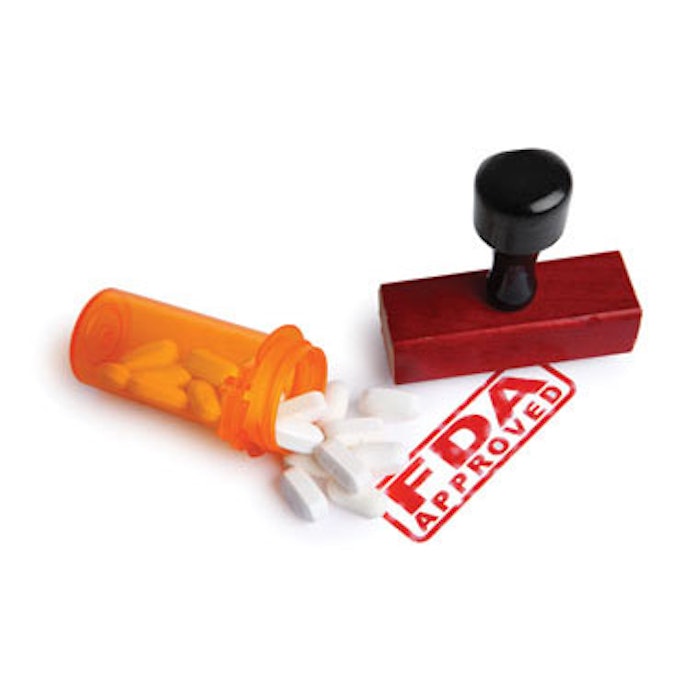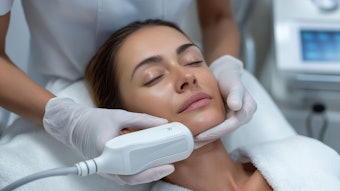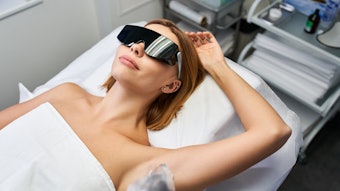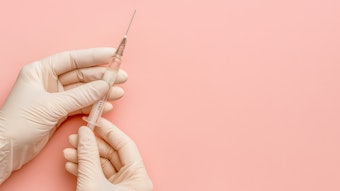
New drugs and medical devices may be touted as FDA approved, but exactly what does that highly valued and oft-cited stamp of approval mean? It’s a question that’s sure to come up often for physicians as they consider whether to prescribe a new treatment for their patients or bring a medical device of their own design to the marketplace.
The process used by the U.S. Food and Drug Administration (FDA) to determine if a new drug or medical device is “safe and effective” can seem complicated with different classes and tiers of approval. Some medical products are approved almost immediately, while others require decades of preclinical animal testing followed by human clinical trials.
It’s up to the manufacturer of a drug or device to prove to the FDA that the product is safe and effective. Because no medical product is entirely risk-free, the research and testing must show that the benefits of the drug or device for a particular condition outweigh the risks to patients who will use them. Thus, FDA approval means that the agency has concluded that the benefits of an approved item exceed the potential risks for its planned use.
Medical Device Approvals
There are three regulatory classes for medical devices. These tiers were created according to the level of control required to ensure that the device is used in a safe and effective manner, and according to the risk the device poses to the patient and/or end user. Class I devices pose the least risk; Class III the highest.
The class to which a device is assigned determines the FDA application process required to market the product in the U.S. If a device falls into Class I or II—and is not exempt—the manufacturer must complete a 510(k) premarket submission demonstrating that the device to be marketed is at least as safe and effective as another existing and FDA-approved medical device currently on the market. Applicants must compare their device to one or more similar, legally marketed devices and make a claim that their device is substantially equivalent to the existing product.
In addition, manufacturers (both domestic and foreign) and initial distributors (importers) of medical devices must register their establishments annually with the FDA. Foreign manufacturers must also designate a U.S. Agent to represent their product. The fee in 2014 for establishment registration is $3,313.
Class I devices present the least potential for harm to the user and are often simpler in design than Class II or Class III devices. Examples include enema kits and elastic bandages. According to the FDA, 47 types of medical devices fall under this category and 95% of these are exempt from the regulatory process.
Class II. Most medical devices fall into the Class II category, requiring more work and supporting documents for approval. Examples include powered wheelchairs, some pregnancy test kits and most aesthetic lasers.
Image copyright Daniel Hurst Photography/Getty Images
[pagebreak]
“The FDA requires a comparative analysis to devices already on the market,” says Daniel Kamm, principal engineer for Kamm & Associates, an FDA consulting firm for device manufacturers. It takes roughly three to six months before approval is granted, and it’s up to the manufacturer “to show through test reports that it’s at least as good as what’s on the market,” says Kamm.
Class III devices are defined by the FDA as those that usually sustain or support life, are implanted or present potential unreasonable risk of illness or injury. Examples of Class III devices include pacemakers and breast implants. According to the FDA, 10% of medical devices fall under this category.
These devices require clinical trials for approval. “It can take years and hundreds of thousands of dollars to be approved,” Kamm says. “It can be a very expensive and time-consuming process. The device is put through the paces to demonstrate what its effect is on patients to see if it’s safe and effective.”
When trying to bring a device to market, a manufacturer first needs to determine the class to which the device belongs. The FDA provides two ways to discover how to classify the device and whether any exemptions will apply. It offers a database on its website (fda.gov) where you can search the device name. Or, if you know the panel or medical specialty to which a device belongs, you can go to the panel’s web page and identify the device and the corresponding regulations. (The FDA has classifications for approximately 1,700 different generic types of devices and has organized them into 16 medical specialties called “panels.”)
Kamm notes the Division of Industry and Consumer Education (DICE) is a helpful resource for anyone looking to bring a medical device to the marketplace. “They will help you work through what you need to find your way through the regulatory path,” he says. The webpage for DICE is at fda.gov, under the Medical Devices heading.
Prescription Drug Approvals
The goal of the FDA’s Center for Drug Evaluation and Research (CDER) is to ensure that drugs marketed in the U.S. are safe and effective. It does not test drugs—the manufacturer of the drug administers clinical trials—although its Office of Testing and Research does limited research in the areas of drug quality, safety and effectiveness.
The center oversees prescription and nonprescription (over-the-counter) drugs. Companies that apply to launch a new drug in the U.S. are responsible for testing the drug in accordance with the FDA’s guidelines and supplying evidence that the drug is safe and effective. The process of getting FDA approval for a new drug can take as little as one year or up to a decade, according to Michael Anisfeld, president of Globepharm, a consulting firm for healthcare manufacturers.
The FDA has a two-tier system for new drug review. The standard review is for a drug that offers, at most, only minor improvement over existing marketed therapies, and the goal is to get it reviewed within 10 months. Priority designation is applied to drugs that offer major advances in treatment or provide a treatment where none existed previously. The goal for completing a Priority Review is six months. Other approaches, including Fast Track, Breakthrough Therapy and Accelerated Approval, were designed to speed the approval of therapeutically important drugs.
[pagebreak]
The key form in the drug approval process—used since 1938—is the New Drug Application, which is submitted by the manufacturer. The application, which contains data gathered during human and animal testing, is reviewed by a team of physicians, statisticians, chemists, pharmacologists and other scientists from the FDA; this team also reviews the proposed labeling of the drug.
According to the FDA, the New Drug Application provides enough information for the FDA to determine if the drug is safe and effective, and whether its benefits outweigh its risks; whether the drug’s labeling, including its package insert, is appropriate; and whether the methods used in manufacturing the drug and the controls used to maintain the drug’s quality are adequate to preserve the drug’s
identity, strength, quality and purity.
“The documentation required in a New Drug Application is supposed to tell the drug’s whole story, including what happened during the clinical tests; what the ingredients of the drug are; the results of the animal studies; how the drug behaves in the body; and how it is manufactured, processed and packaged,” according to the FDA.
Generic Drug Approvals
Generic drugs are subject to an Abbreviated New Drug Application. The abbreviated application does not require preclinical or clinical data to establish safety and effectiveness. Instead, an application for a generic drug must scientifically demonstrate that the product is bioequivalent to the innovator drug.
The FDA reports that one way scientists demonstrate bioequivalence is to measure the time it takes the generic drug to reach the bloodstream in 24 to 36 healthy volunteers. This gives them the rate of absorption, or bioavailability, of the generic drug, which is then compared to the innovator drug. The generic version must deliver the same amount of active ingredients into a patient’s bloodstream in the same amount of time as the innovator drug.
Federal law allows brand name companies to apply for up to five additional years of patent protection for the new medicines they develop to make up for time lost while their products were going through the FDA approval process. Brand name drugs are subject to the same bioequivalence tests as generics upon reformulation.
Over-the-Counter Drugs
Over-the-counter drugs are defined by the FDA as drugs that are safe and effective for use by the general public without seeking treatment by a healthcare professional.
There are more than 300,000 over-the-counter drugs being marketed in the U.S. today. The FDA reviews the active ingredients and the labeling of more than 80 therapeutic classes of drugs, such as analgesics or antacids, instead of the individual drug products.
For each category, an over-the-counter drug monograph is prepared and published in the Federal Register. These monographs outline acceptable ingredients, doses, formulations and labeling, and can be found in section 300 of the Code of Federal Regulations. The Office of Drug Evaluation IV, under the Center for Drug Evaluation and Research, is primarily responsible for reviewing over-the-counter drugs. Additionally, the Nonprescription Drug Advisory Committee meets regularly to help the agency in evaluating issues surrounding these products. The FDA has cited this committee as playing a major role in the growth of prescription to over-the-counter switches in recent years.
[pagebreak]
Once a final monograph is in place, companies can make and market an over-the-counter product without the need for FDA pre-approval. These monographs define the safety, effectiveness and labeling of all marketed active ingredients. New drugs that don’t meet an existing monograph must go through the New Drug Application process.
In an industry where the “off-label” use of FDA-approved products is widespread, Anisfeld stresses the importance of understanding both the FDA approval process for drugs and devices, and the ease with which indicated uses can be identified. “It’s very tempting for a salesperson to try to stretch the use of a product beyond its approved indications,” he says. “But that means the doctor is taking full personal and legal responsibility for anything that happens to the patient. Ask the salesperson if the product is approved by the FDA for this indication. The accepted uses also are listed on the package insert.”
Annemarie Mannion is a Chicago-based freelance writer.











